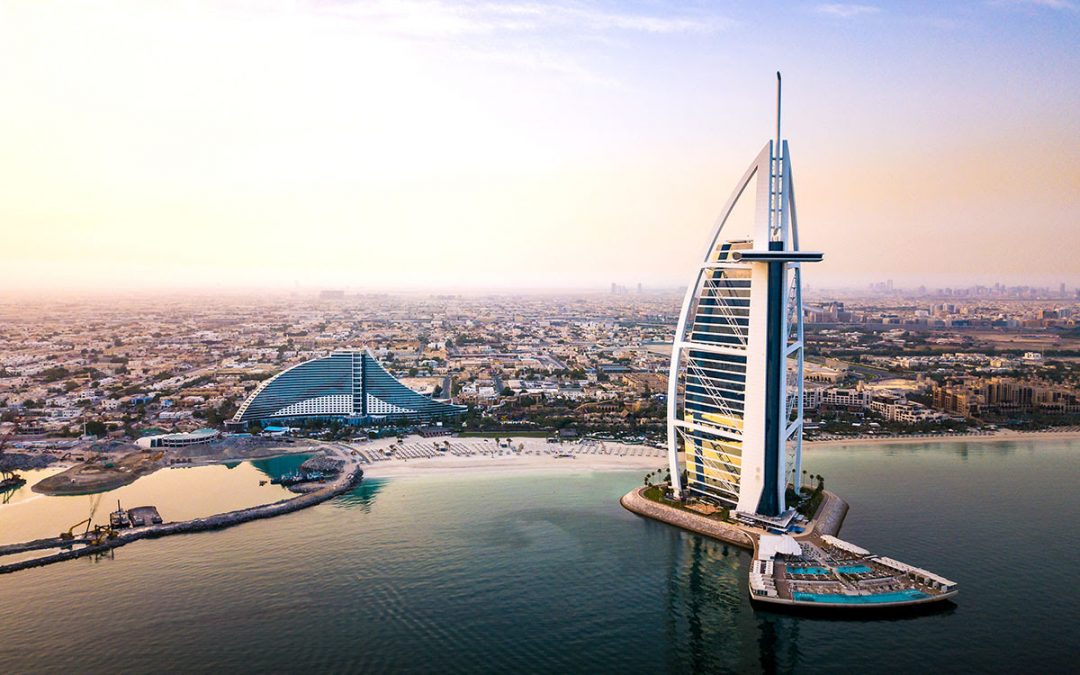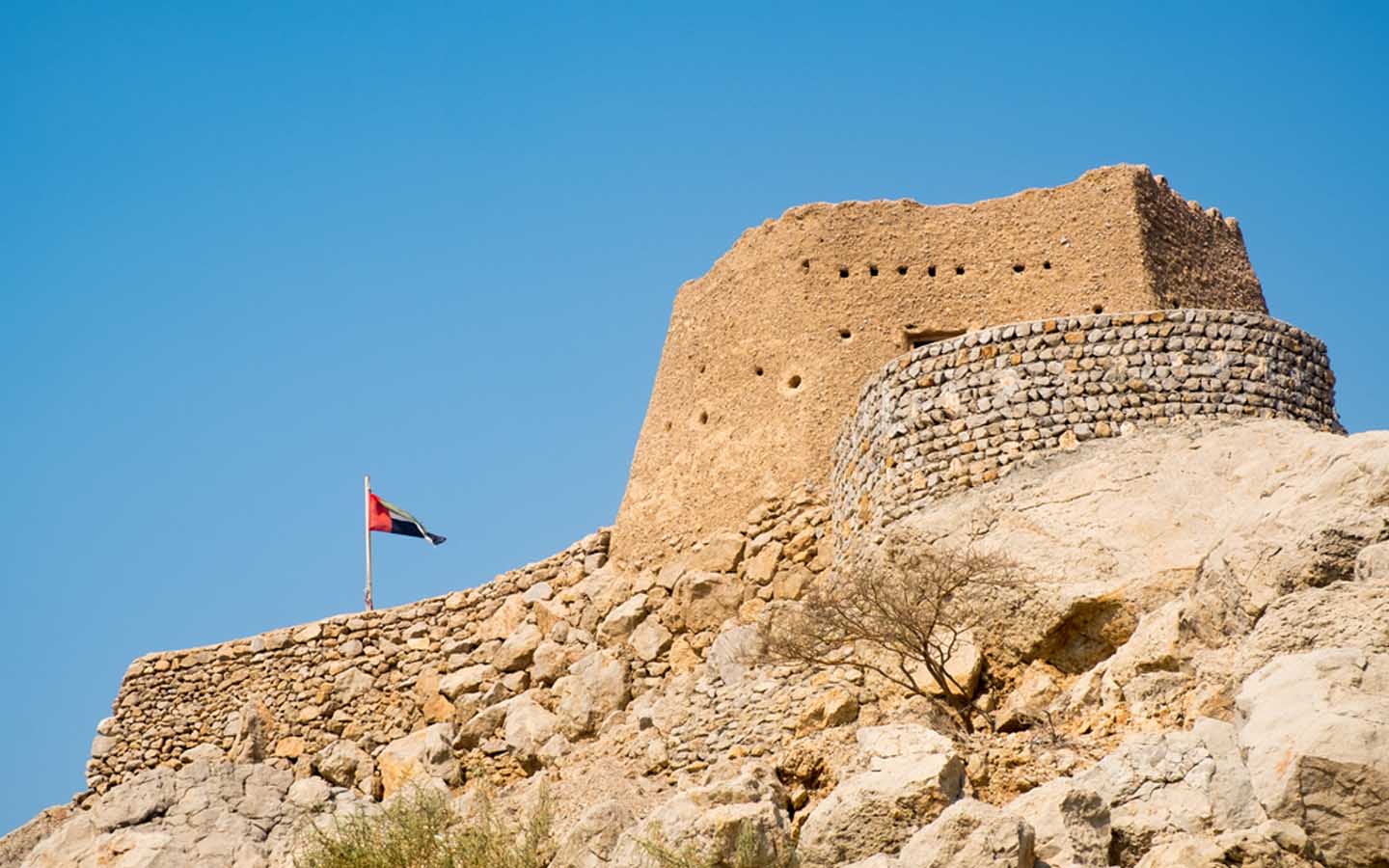Featured Image : Dubai Dubai is the capital of the Emirate of Dubai. In the 18th century, it was a...


Featured Image : Dubai Dubai is the capital of the Emirate of Dubai. In the 18th century, it was a...
Features information that is relevant to travellers who are thinking about and actively planning a visit Dubai or any part of the Arab World.

Dhayah Fort was built in the 18th-century in Ras Al Khaimah, United Arab Emirates (UAE) as a protection against British invasion and was the site of a battle during the Persian Gulf campaign of 1819, when British troops captured the fort after a brief siege. After the fall of Dhayah, a treaty known as General Maritime Treaty of 1820, was signed between the rulers of Abu Dhabi, Sharjah, Ajman, Umm Al Quwain, Ras Al Khaimah and Great Britain in January 1820, with the nearby island state of Bahrain acceding to the treaty in the following February. This treaty endured until the independence of the United Arab Emirates on 2 December 1971.

The Dhayah fort offers a stunning 360-degree view of its scenic surroundings as it is on top of a hill. It is accessed only by a zigzag staircase of more than 100 steps. Climbing the staircase is a bit of a challenge but the scenic view from the fort is well worth the effort. You also get the views of the beautiful sea, majestic Hajar Mountains, a splendid oasis and the city around it.
In the summer it can get very hot so make sure to cover up against direct sunlight and apply sunscreen and wear sunglasses and a cap to protect your face and eyes.

There is a watchtower located just outside Al Jazirah Al Hamra. This tower was constructed about 100 years ago to protect the water wells in the village of Al Jazirah Al Hamra.
The ‘Sur” fortification was constructed using mud bricks at the foot of the hill. This ‘Sur’ was used as a retreat for local people. The fort, the watchtower and the “sur’ formed the fortification of Al Jazirah Al Hamra.
If you are a first time visitor it would be better to go with a guide for navigation, as the fort is located away from the main road of Al Rams. The area is hot, so carry plenty of water to stay hydrated. If you are visiting in summer you will be exposed to lot of direct sunlight. Apply sunscreen and wear sunglasses and a cap to protect your face and eyes. The visiting hours are 09:00 am to 05:00 (Sunday to Thursday).
While you are in Ras Al Khaimah, you may also want to visit Wadi Bih in Ras Al Khaimah. Some other prominent historic places in the emirate include the haunted Al Qasimi Palace and the National Museum of Ras Al Khaimah.
The National Museum is located in one of the oldest forts in the country. The fort also served as the residence of a ruling family before it was converted into the National Museum in the 1980s. In fact, amongst the countless artifacts and historical exhibits are original treatises signed by former ruling families. The excavated artifacts show that the Ras Al Khaimah has been home to several trading civilisations since 5000 BC and has a rich history and continuous settlements for 7,000 years. From traditional weapons to fishing instruments, and ancient pottery, the museum is a great spot for anyone looking to glimpse into the emirate’s past.

The Dubai way of life did not always center on oil and its profits. Dubai was originally a fishing settlement. Inhabitants lived by fishing, pearling, herding sheep and goats, and by the turn of the century was an important trading port. Trade expanded even as Dubai was under the British colony, and Dubai began to grow in merchant appeal. By the early 1900s, almost a quarter of the population was foreign.
The population in the 1930s was 20,000, and of that, 2,000 were Persians, 1,000 Baluchis, many Indians and substantial communities from Bahrain, Kuwait and the Hasa province in eastern South Arabia. In 1954, the British established a political agency there as well.
In 1971, the British withdrew and Dubai joined with Abu Dhabi, Sharjah, Aiman, Umm Al Quwain, Fajairah and later Ras Al Khaimah to create the federation of the United Arab Emirates. Oil was discovered in 1966 and by 1969 Dubai exported its first shipment of oil. The success of this venture fueled the rapid development of the area and through the insight of the late ruler provided for the general welfare of the inhabitants. Dubai worked to build up its infrastructure of transport facilities, schools, hospitals, tourism developments and other amenities of an advanced society.
The journey continues today. The story of Dubai reads like a rags-to-riches tale, and indeed, it is hard to imagine anywhere else in the world that has developed at such a pace, in such a short time. Dubai is a magnificent expression of the Emirate’s incredible vision and a tribute to its sea-faring heritage, an uncompromising statement of success in a land that century after century has provided immense opportunity.